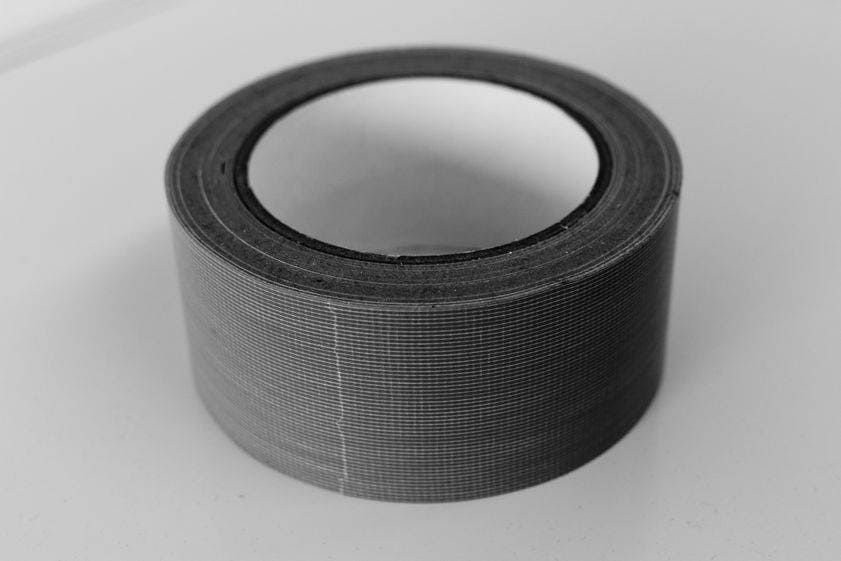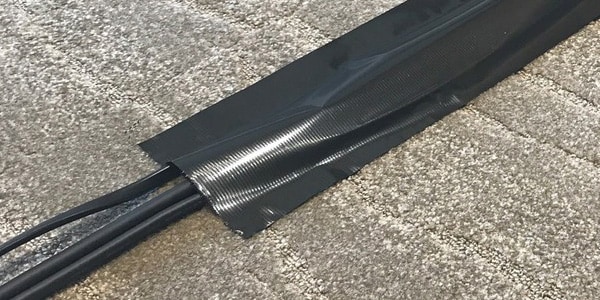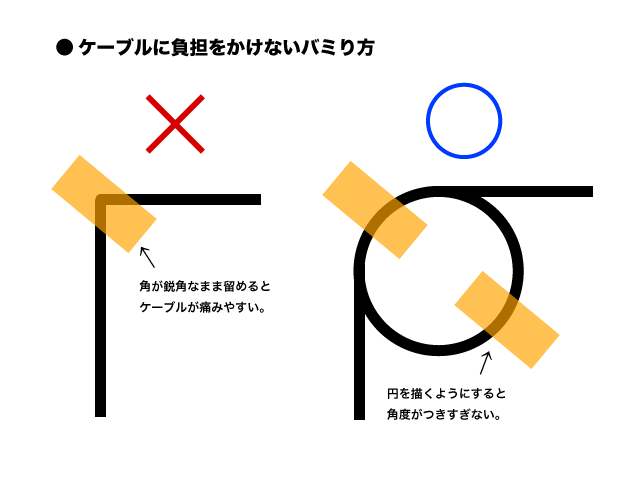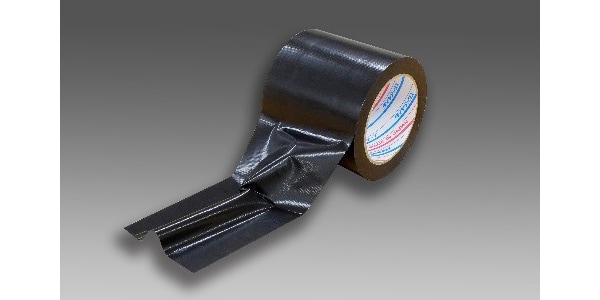"Gummed tape" – an indispensable item no matter what
Hello, from the original sound guy writer, Araki Jakkan.
[Sound Industry tips] A story about how to make good use of the microphone's standard "SHURE SM58" in the field of acoustics. [Sound Industry tips] Trumpet speaker stuff and collection. And I am indebted to you for reading my rough explanation of "parallel connections".
This time, I would like to talk about the usefulness and importance of gummed tape in audio.

Gummed tape is an indispensable without which you would have problems in all stage events, not just Sound.
If you work on the stage, you know how much you need and what it can do.
Mainly used in the Sound Industry
1…To mark of the position where the performer will stand and where the equipment is placed
2…Cable organization and protection
It is used for two things.
So, first of all, I will delve into those two.
Gum tape as a "Bamiri" (position) marker
It’s used for both live events and drama productions. For example, the performer is on a stage set!Suppose there is a scene where he runs out and has to stop in a particular position.
At that time, if he has to stop "Here!" without a marker, there is a possibility that he will be standing out of position.
To avoid such a situation, gummed tape is stuck on the floor of the stage in the position that was decided at the time of the rehearsal. It's a landmark.
This is called "Bamiri" in Japanese industry terminology.
When he runs out, if you check where the performer is supposed to stop, he will be standing in the right position as was rehearsed.
By the way, when you watch a TV show, do you sometimes see stickers or something on the floor of the studio? That is also Bamiri. They are implicitly telling the performers where they are to be standing.
Stage equipment is the same. For example, if you have to set up the microphone in the middle of the stage, if you set it up in a different place from where it was during the rehearsal, there is no point in doing the rehearsal.
This is because, at the rehearsal stage, you use a mixer or the like to set the speakers so that the proper sound can be output, but the sound becomes louder when the microphone position is closer than during rehearsal, and becomes quieter when the microphone is moved away.
If that happens, you will have to reset everything from scratch. The volume goes up, down, left and right during the production. The listening audience gets tired of it.
Also, although this may a little technical, the timbre changes depending on the distance from the place where the sound comes out to the microphone, for example.
Imagine a drum snare.
When collecting sound with a microphone, it is easy to imagine that it will pick up a loud sound when you bring it closer, but not only that. Also the attack feeling when hitting with a stick, something like a spring attached to the back of the snare. The sound of the snare is also included.
On the contrary, if you release it, you can collect more spatial sounds such as the snare, the place where it is placed, and the "sound" of the room, instead of the realistic sound.
It is not a good or bad story that bringing it closer or moving it further away.
The sound guy changes the equipment settings while considering the sound that the performer wants to express.
Rehearse to find a place that suits the venue and the performer, it is decided, and then you have the actual performance.
Therefore, it is not good to set up the microphone in a different position from the rehearsal.
By the way, collecting sound closer to where the sound comes out is called "on-mic", and collecting sound away from it is called "off-mic".
Have you ever seen something hanging from the ceiling at a classical concert? It's a microphone for collecting sound. But it collects sound with an insanely "off-mic" position. For classical music, "how the venue sound resonates" is important.
Let's get back to Bamiri.
If there are no markers for the position to put the equipment, the event progress itself may be delayed because it is confusing to simply search for the correct place "Is it here? Is it there?"
If you use Bamiri, venue set up will proceed smoothly.
Great for performers and sound guys! Organizing and protecting cables
The second thing.
Especially when it's a live band, if the cables aren't fixed to the stage, they will move around.
If left as is, firstly the appearance of the stage will be sloppy. It would be a mess if the stage looks cluttered.
And in such a state, the performer may get tripped up.
Therefore, especially when the cable is laid on the road (traffic line) through which people pass, it must be fixed with a rubber tape or the like.

The reason here is to protect the performers and visitors, but this is not the only reason.
If someone catches their foot on a cable, the cable may get disconnected, and the connector connected to the equipment at the end may get damaged.
A simple story, if you pull a thread with both hands as much as you can, it will break. Doing that on stage is a bit like hunting.
In fact, you should avoid walking in a place where you may step on the cable as much as possible.
Anyway, attached the cable to the floor with gummed tape!
This leads to the protection of the equipment.
(Although it is said to overturn the basis of this article, if you want to protect the cable, there is a cable mat available for that purpose as well, so it is recommended to use it especially for cable protection in the flow line. Gummed tape, I'm sorry.)
What kind of gummed tape is suitable for sound industry?
The word "gummed tape" has appeared a lot so far, but there are various types.
And some of them are not suitable for the sound industry.
Therefore, the selection of gummed tape itself is important in terms of sound. I will write a little about that.
First of all, there is no doubt that you will choose the cloth type of gummed tape.
Because, if you use the paper type, you can't remove the gummed tape cleanly when you’re packing up the stage.
The stickiness and the annoyance of peeling off the residue… This is something that everyone will have experienced. I hate it. I hate it.
Moreover, you often perform at a rented venue. You are not allowed to enter or leave the venue until the day you can say, "I’ve peeled it off cleanly."
And here I would like to share my experience.
A long time ago, I forgot my gummed tape at the company and bought some at a 100-yen shop in my neighborhood.
The event was over, and when it was withdrawn, I peeled off the gummed tape that fixed the cables in position.
Then, it stuck to the cable like the adhesive of the gummed tape had melted.
I fastened the entire cable near the flow line for a length of about 5m, and that all got sticky.
It's sticky and cannot be removed by wiping it with a rag.
I patiently wiped it over and over again, and it only revived to the extent that "I think I can use this but not for practical use, no ... I don't want to use it ...".
Therefore, even if the gummed tape is a little expensive, we recommend that you get itt a home improvement store.
My recommendation is "Okamoto Tape". It was easy to get because it is sold at almost every home improvement store.
If you look closely at the tape, you can see what adhesive melts and what does not, like the gummed tape I talked about earlier.
Be careful of the brown paper side that is slippery and a white adhesive.
You can rest assured if the fibers are visible in the brown part and are uneven.
Of course, for normal use, 100-yen shop is enough, right?
Choosing the right color gummed tape.
Another important factor in choosing gummed tape is color.
Brown is the most commonly available gummed tape, but black is often used in the sound industry.
That's because if the stage floor is black, it will stand out if it's brown or another color. The audience will think, "Wow, look at the gummed tape all over the place."
Many amplifiers and speakers are also black, so it's better to use a color that matches them.
However, for example, if the stage floor is made of wood, black is more noticeable than brown...
So it's a good idea to ask which color will be right at the meeting stage.
As an aside, vinyl tape is also good if you only have standing position markers. Because the width is small, it doesn’t stand out. It's easy to peel off. And you can also use a translucent green, curing tape.
Changing the direction of a cable. Tips for using gummed tape
Finally, I would like to conclude this article with a few tips on using gummed tape.
When fixing the cable to the stage with gummed tape (maybe because there are many rectangular stages), for some reason, everyone wants to make the angle of the cable about 90 degrees according to the corner of the stage.
However, if you fix the cable at an acute angle for a long time like that, the core may be damaged.

Therefore, when fixing cables at the stage angle, if you put a rubber tape around it, the cable itself will keep a gentle curve even if you change the direction by 90 degrees or more.
This has become longer than expected again. Thank you to those who have stayed with us until the end.
If you have a chance to check my blog again, thank you. ‘Til then.




























